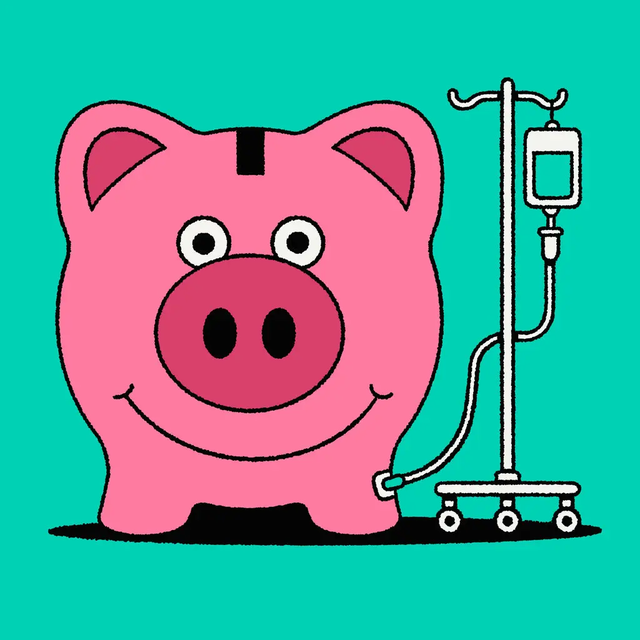Ann Carrns
Oct. 18, 2023
Health insurance plans with high deductibles may, at first glance, seem unappealing because you’re likely to pay more out of pocket now for medical care. But such plans can also offer the option of investing for the future through special health savings accounts.

Till Lauer
Health savings accounts offer valuable tax benefits and have become increasingly popular since they were introduced two decades ago. At the end of last year, about 36 million health savings accounts held $104 billion, up from about eight million accounts with almost $16 billion a decade earlier, according to Devenir, an H.S.A. investment and research company. More than a quarter of workers with employer health coverage were enrolled in high-deductible plans with health savings accounts in 2022, said KFF, a nonprofit health research group.
Yet many people still confuse them with flexible health spending accounts, a workplace perk that offers more limited tax benefits. Because it’s open enrollment season at many employers, it’s important to know the difference. F.S.A.s have lower contribution limits, and typically you must spend the money before a deadline or forfeit it. Also, if you change jobs, you can’t take F.S.A. money with you.
H.S.A.s also help you pay for current medical expenses, but balances may be saved or invested to help pay for future costs. If you don’t use the funds, they roll over into the next year. And if you change employers, the H.S.A. goes with you.
Contributions are deducted from your paycheck pretax, lowering your taxable income. (If you contribute to an account on your own, you get a deduction on your tax return.) The money grows federal-tax-free and is not taxed when you make withdrawals, as long as you spend the money on eligible costs and equipment. (California and New Jersey tax H.S.A. contributions and investment gains at the state level, but the accounts can still be a good deal because the federal benefits can be greater than the lack of state benefits, according to the investment adviser Vanguard.)
Not everyone qualifies to contribute to an H.S.A. The accounts are available to people with health insurance that meets certain criteria, like a deductible — an amount you must pay before insurance does — of at least $1,500 for single coverage for 2023 and $3,000 for family coverage.
Yet many people don’t take advantage of H.S.A.s. A third of people enrolled in eligible health plans did not contribute to one, according to a 2020 study. And many people cannot afford to save for the long term because they need the money in the accounts to pay for current medical costs. Just 12 percent of account owners invested in assets other than cash in 2022, according to the nonprofit Employee Benefit Research Institute.
Still, if your health plan is eligible, it makes sense to consider funding an H.S.A., benefits experts say. Whether you save over time or spend your contributions on current costs, you’ll end up with a lower tax bill than if you simply paid for the care out of pocket, according to a recent report from Vanguard.
A hypothetical 40-year-old single New Yorker with annual income of $100,000 and $3,000 in expected out-of-pocket medical costs would have a tax bill that was about $1,390 less (including state and federal income tax as well as payroll taxes) by contributing to an H.S.A. instead of ignoring it, Vanguard’s report said.
“Whether the contributions are saved or spent, an H.S.A. allows for income to avoid taxation today,” the report said.
And for people who can afford to do so, saving and investing H.S.A. contributions long term, and paying for current health costs out of pocket, can bolster wealth significantly later in life, Vanguard found.
People 55 or older can contribute an extra $1,000 to an H.S.A. above the Internal Revenue Service’s annual limits of $3,850 for a single person and $7,750 for families in 2023, said Sara Taylor, senior director of employee spending accounts at WTW, a benefits consultant.
“The reality is that most people need more medical care, and it can be expensive,” she said.
Once enrolled in Medicare, the federal health plan for older Americans, you cannot continue contributing to an H.S.A. — but you can spend the money you’ve accumulated tax-free on medical needs, including Medicare premiums and out-of-pocket costs, Ms. Taylor said. (Premiums for supplemental Medigap policies, however, are not H.S.A. eligible.) Once you turn 65, you can also withdraw H.S.A. funds for expenses unrelated to health care. You’ll pay ordinary income tax but will not owe a penalty.
Here are some questions and answers about health savings accounts:
What can I buy with my H.S.A.?
You can spend your savings on a variety of medical and health expenses, including doctor visits, hospital stays, and vision and dental care. During the pandemic, the government expanded the list of eligible expenses to include tampons and pads as well as nonprescription medicine like pain relief and allergy drugs. For a complete list of eligible health expenses, see I.R.S. Publication 502.
Must I reimburse myself for health spending costs from my H.S.A. right away?
No. You can, if you choose, pay for eligible expenses out of pocket now and save your receipts. Then you can reimburse yourself from the H.S.A. years later and use the money for something else, even if it’s not medical-related, said Maria Bruno, a financial planning strategist with Vanguard.
Perhaps you paid $4,000 for a child’s braces with other funds. You can later withdraw $4,000 from the H.S.A. tax-free — if you have the receipts — and spend it on, say, college tuition or retirement costs. “There’s a lot of flexibility,” Ms. Bruno said.
Just be sure to keep good records for tax purposes; many mobile apps can help you do this by uploading receipts, Ms. Bruno said.
Are there proposals to increase the limit on annual contributions to H.S.A.s?
A bill before the House of Representatives, the H.S.A. Modernization Act, would significantly increase the annual allowable contributions to H.S.A.s, among other changes.
c.2025 The New York Times Company





